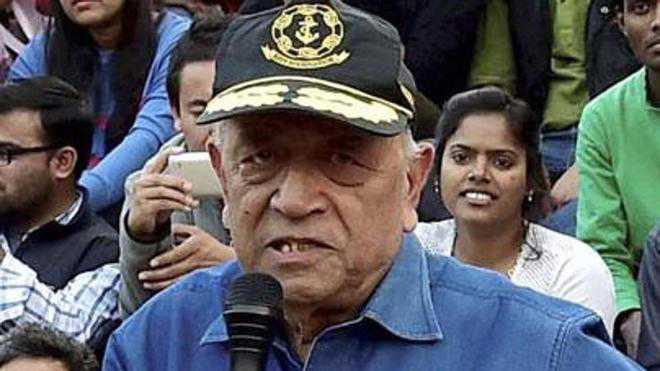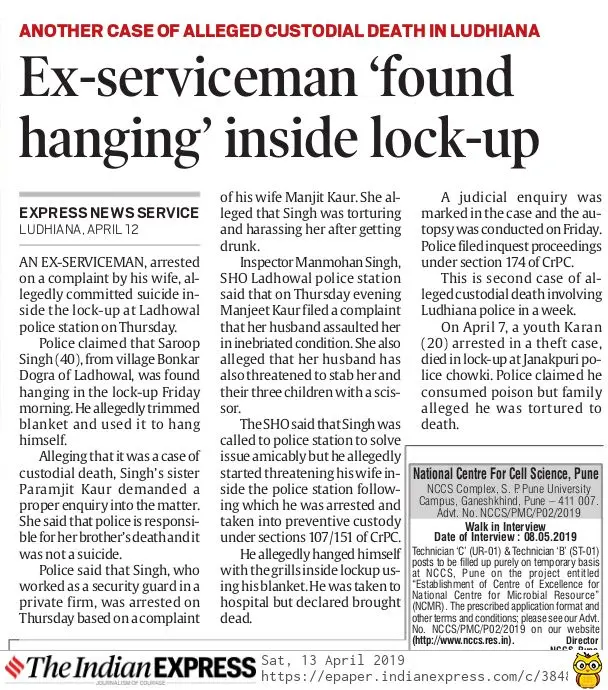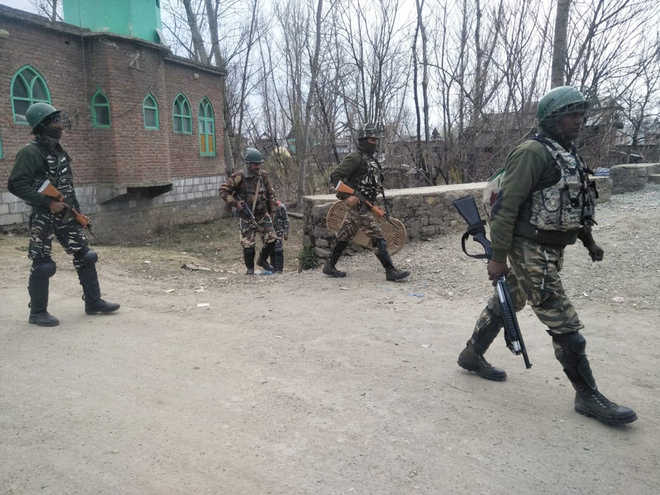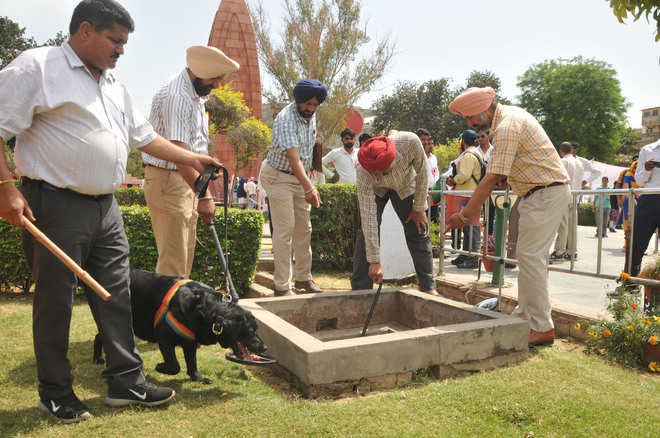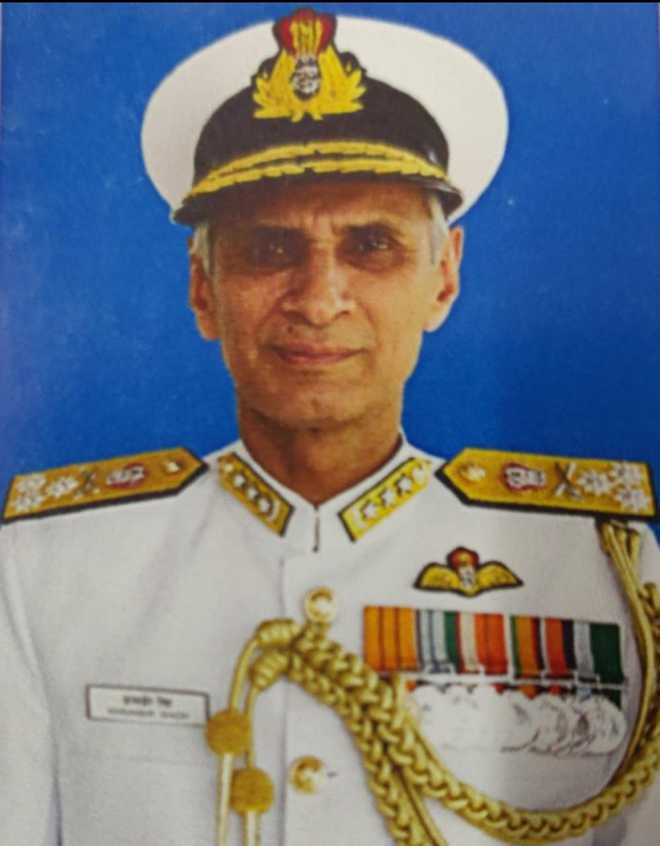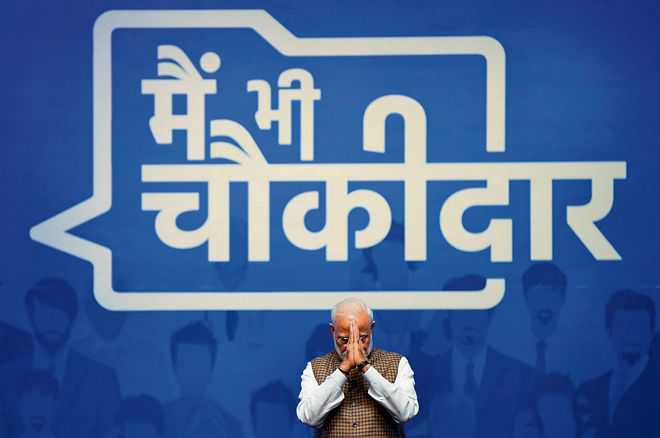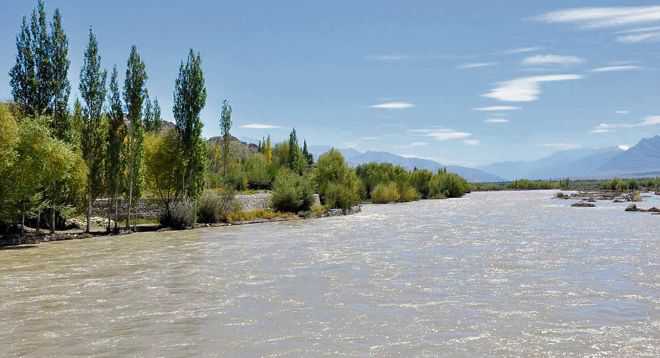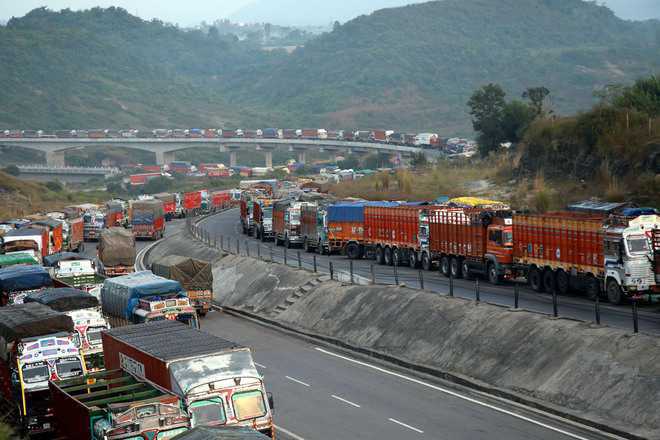India’s first president, Rajendra Prasad, inaugurated the structure in 1961; since then, a martyr’s gallery and a flame commemorating the victims have come up
THE CENTRE PLANS TO RENOVATE THE HISTORICAL SITE BY CREATING BETTER INFRASTRUCTURE FOR TOURISTS, INCLUDING 4-D THEATRE, LANDSCAPING, MODERN LIGHTING AND BEAUTIFICATION OF THE MEMORIAL
Amritsar’s Jallianwala Bagh was a desolate piece of land partly used for dumping garbage until British General Reginald Dyer oversaw the massacre of several hundred unarmed people gathered there on April 13, 1919, to protest against a draconian law that allowed internments without trial. The massacre etched Jallianwala Bagh in India’s collective memory and fuelled India’s struggle for complete independence from Britain.
HT ARCHIVE■ An artitst’s impression of the Jallianwala Bagh Massacre.Davinder Pal Singh, a Sikh scholar whose family has been running a shop for decades near Jallianwala Bagh, said the ground was cleaned for the protest against the Rowlatt Act before the massacre. He added the residents would dump garbage at a “sort of abandoned open ground”.
Darbari Lal, a former deputy speaker of Punjab assembly, said Sardar Himmat Singh Jallianwale owned the land. He said Jallianwale was a noble in the court of Maharaja Ranjit Singh (1780-1839), who was from village Jalla in Punjab’s Fatehgarh Sahib.
“In 1919, Jallianwala Bagh was no garden, but a desolate piece of land… of irregular shape… [It was] about 250 yards long and 200 yards wide. Originally, however, it had been laid out as a garden in the middle of the 19th century…,” said Balwinder Singh, a former head of Guru Nanak Dev University’s Guru Ramdas School of Planning in Amritsar. He said it was uneven and a small strip of land near the entrance of Jallianwala Bagh was on a higher level. “…the rest of the land was lower by four to five feet.”
A narrow passage, which General Dyer used to make his way to the ground along with his soldiers, has been left intact with bullet marks on the walls of few structures and a well in the Jallianwala Bagh. Many had jumped into the well in a desperate attempt to save themselves as the soldiers showered bullets at them.
The British wanted to erase signs of the massacre, according to Lal. But national movement leader Madan Mohan Malaviya purchased the Jallianwala Bagh by raising around ~5.60 lakh through donations in August 1923. He led a committee that was formed to build a memorial to those killed in the massacre. The memorial could not be built as long as Britain ruled India until August 1947.
The country’s first president, Rajendra Prasad, inaugurated the memorial, which was built at a cost of over nine lakh, on April 13, 1961, in presence of then Prime Minister Jawaharlal Nehru, according to Sukumar Mukherjee, the secretary of Jallianwala Bagh National Memorial Trust. The trust manages the memorial.
The memorial’s central pylon is 30-feet-high with a four-sided tapering stature of red stone. It stands in the middle of a shallow tank built with 300 slabs with a carved Ashoka Chakra, the national emblem.
A stone lantern stands at each corner of the tank. On all four sides of the pylon the words, “in memory of martyrs, 13 April 1919”, has been inscribed in Hindi, Punjabi, Urdu and English. A semi-circular verandah near Jallianwala Bagh’s main entrance marks the spot, where General Dyer’s soldiers took positions to fire at the gathering.
Rows of poplars and eucalyptus have been planted along the periphery to provide a green wall for isolating the view of the nearby houses.
Mukherjee said a martyrs gallery was established in 1972 under the guidance of Mohinder Singh Randhawa, a writer and former civil servant. A painting of the massacre as well as portraits of the political leaders of the time, too, is on display. In 2000, then Union minister Ram Nayak lighted the Amar Jyoti [Eternal flame] to commemorate those who died.
“Actually, we had the documents [ historical records, rare photographs and newspaper clippings] displayed openly in the room. The visitors used to touch them and spoil them by writing something. We felt this practice was damaging the original and rare documents. Then we displayed scanned formats of the documents in the museum,” said Mukherjee. A light and sound show was introduced in the garden by then defence minister AK Antony in 2010. At the time, Bollywood actor Amitabh Bachchan recorded the voice-over for the 52-minute show, which attracted hordes of visitors in its initial run. But snags developed soon and it has not been functional since 2014.
The area has also undergone several changes. The entry has been given a new look with small bricks through the narrow passage is preserved. Mukherjee said the total area of the Jallianwala Bagh was around six-and-half acres and now it has gone up to seven acres.
Union home minister Rajnath Singh inaugurated a statue of Shaheed Udham Singh at the entrance of Jallianwala Bagh last year. Udham Singh was hanged in July 1940 for killing Michael O’Dwyer, who was Punjab’s lieutenant governor at the time of the massacre.
Rajya Sabha member Shwait Malik said Jallianwala Bagh needs a facelift and added that he has given ~10 lakh from his development fund for improving basic amenities there. He added the tendering process for the Centre’s plans of redeveloping it has started.
Malik said the Centre plans to renovate the historical site by creating better infrastructure for tourists. He added it would involve renovation, up gradation and beautification of the Jallianwala Bagh Memorial.
Malik said a four-dimensional theatre with the sitting capacity of 70-80 people is also being set up for screening documentaries. He added the martyr gallery and the museum will be modernised with air conditioning. Malik said touch control panels would be installed along with LED screens and modern lighting. He added landscaping, too, would be carried out with the installation of and fountains.
How Australian press reported the tragedy
FLASHBACK ‘Disgracing the British name’ and ‘Dyer’s dreadful mistakes’ were some of the searing headlines in the Australian newspapers a century ago when they reported the terrible tragedy at Jallianwala Bagh in Amritsar. Manpreet K Singh delved into the old archives to reveal to how the press in Australia, then a British colony like India, audaciously reported the massacre and its aftermath while there was complete censorship imposed on the Indian press then.
MELBOURNE : Today marks the centenary of the Jallianwala Bagh massacre, in which hundreds of unarmed Punjabis were shot down and more than 1,100 were injured during ten minutes of rifle fire from British Indian troops.
The firing was ordered by Colonel Reginald Dyer who came to be known as ‘the butcher of Amritsar’ and was relieved of military duties the year after the massacre.
At the time, Winston Churchill said in the British parliament, “it is an extraordinary event, a monstrous event, an event which stands out in singular and sinister isolation.”
In Australia it was reported as the day of “India’s Re-Birth”, describing the massacre as “Dyer’s dreadful mistake,” while it was later reported in 1927 that General Dyer died after suffering a stroke and being “5 years an invalid.”
The entire episode was extensively reported by Australian newspapers a century ago, despite complete press and mail censorship imposed in Punjab at the time.
By the time Australians heard of the carnage at Amritsar, almost a year had passed. Yet, it made headlines.
Sydney’s The Australian Worker called it an “an orgy of frightfulness in India” which was “disgracing the British name”. The Daily News of Perth reported it as “Dyer’s Dreadful mistake”, and in Melbourne The Age said the impact of the riot and massacre was “the Re-Birth of India”.
The Daily News of Perth republished an article on August, 16, 1920 titled ‘More About Amritsar: Dyer’s Dreadful Mistake’ in which writer Lovat Fraser cited the Battle of Saragarhi and other historical events to acknowledge the long standing relationship that the British enjoyed with Punjabis, especially Sikhs.
Fraser, the then-editor of Times of India, wrote, “General Dyer’s action at Jallianwala Bagh appears to have been entirely indefensible. He acted after open disorder had ceased in the city for two days; he gave no warning on the spot, but began firing within 30 seconds [of arriving]; and he was responsible for grave and unnecessary slaughter. His plea is that he wanted to produce ‘sufficient moral effect’ throughout the Punjab. Such was not his duty and the effect he has really produced is to create, not only in the Punjab, but throughout India, a bitterness that will take years to eradicate.”
ORDERS TO CRAWL, LASHINGS & BOMBING Many Australian newspapers described the harsh cruelties dealt by General Dyer in the few days preceding the Jallianwala Bagh massacre, which also continued well after the bloody Baisakhi.
The Freeman’s Journal published in Sydney on September16, 1920 reported that Punjab, “although disturbed – and for good reason – but was not rebellious.” It drew attention to how Punjabis were treated by saying, “We do not exaggerate when we say that this province, a vital element in the British government of India, and the recruitment of it’s army, was simply trodden under foot.”
Page 7 of Freemans Journal published on 16 September 1920
The crawling order enforced on Punjabis and public lashings were described in greater detail in The Age on February 18, 1921.
Describing what happened on April 10, The Age reported, “One of the most shocking occurrences of that day was the ill-treatment by the mob of Miss Sherwood, a lady missionary, who was knocked off her bicycle on the streets, and brutally beaten with sticks, ultimately being left half dead on the roadway.”
It was on that afternoon that General Dyer arrived in Amritsar with the power to “take whatever steps he thought necessary for the re-establishment of civil control.”
The article describes what transpired in Jallianwala Bagh on April 13 in macabre detail, quoting General Dyer as saying, “This was a horrible duty I had to perform” adding “there could be no question of undue severity.”
“Following the proclamation of martial law at Amritsar, public floggings took place, the ‘curfew’ was instituted, numerous arrests were made, many natives were sentenced to death, and what were termed ‘minor punishments’ were inflicted. Some of these were of a ludicrous character, particularly the order which compelled every native who passed along the street in which Miss Sherwood had been assaulted, to crawl on his stomach.”
“So great was the outburst of indignation throughout India, and, indeed in Great Britain also, that a Commission was appointed in October 1919, to investigate the occurrence.”
Even so, General Dyer had a fair share of supporters and sympathisers, some of whom hailed him as a hero. Even after he was forced to leave the army, many donated funds which quickly reached £4,000, as reported by The Herald in Melbourne on August 14, 1920.
DYER A BROKEN MAN The Telegraph in Brisbane on October 17, 1927 described what happened to General Dyer thereafter. “The punishment inflicted on him as a result of the recommendations of the Hunter Committee was a serious one, as he was compelled to retire from the Army in 1920 and he was not confirmed to the rank of Brigadier General.”
Calling him “a broken man”, the newspaper article said he was “partly a victim of his own temperamental defects, but mainly the victim of lamentable indecision and timidity at Simla (the capital of British Raj at the time), and of gross political expediency at White Hall.”
It added, “The controversy told on General Dyer’s health, and from the time he was officially punished, he was broken in health and a doomed man.”
He died eight years after the Jallianwala massacre on July 24, 1927. His death was reported in many Australian newspapers and Perth’s The Daily News on October 24 ran with the headline “The Broken-hearted man, 5 years an invalid.”
It reported that Dyer “suffered a stroke nearly five years ago and had been an invalid ever since. He had been”unconscious for the last few days”.
MICHAEL O’ DWYER AND UDHAM SINGH’S REVENGE
Another prominent figure in the Jallianwala Bagh saga was Sir Michael O’Dywer, the Lieutenant Governor of Punjab from 1912 till 1919. He was knighted within a year of assuming charge of Punjab and was known to have completely supported and justified Dyer’s actions during the 1919 massacre.
O’Dwyer ordered the bombing of Gujranwala (another city in Punjab), days after the Jallianwala Bagh slaughter and was ultimately dismissed in 1920 for “cruel and barbarous actions.”
O’Dwyer was assassinated on March 13, 1940 by Udham Singh, an Indian freedom fighter, who sought to avenge the Jallianwala Bagh massacre. On March 15 1940, The Newcastle Morning Herald and Miner’s Advocate reported, “Sir Michael O’Dwyer was shot through the heart during a meeting of East India Association at Caxton Hall, Westminster. Six shots were fired by a member of the audience.”
The newspaper also reported that in the same incident, “The Secretary of State of India Lord Zetland, and two other former governors of India, Lord Lamington and Sir Louise Dane were wounded”.
It led to the immediate “arrest of 37-year-old Mohamed Singh Azad (original name Udham Singh) who stated, ‘I made a protest’.”
Udham Singh, was tried and found guilty of murder. It was reported that he said in court of O’Dwyer’s death, “I did it because I had a grudge against him. He deserved it. He was the real culprit. He wanted to crush the spirit of my people, so I have crushed him. For full 21 years, I have been trying to seek vengeance. I am happy that I have done the job.”
Udham Singh, who went by the name Ram Mohamed Singh Azad, was hung to death on 31 July 1940. He is regarded as a hero of India’s freedom movement. His remains are preserved at the Jallianwala Bagh.
For a long form version of the article, log on to: https:// www.sbs.com.au/yourlanguage/punjabi/en/article/2019/04/11/jallianwalabagh-massacre-throughaustralian-lens












